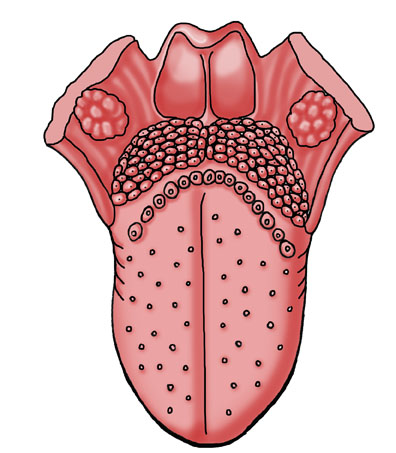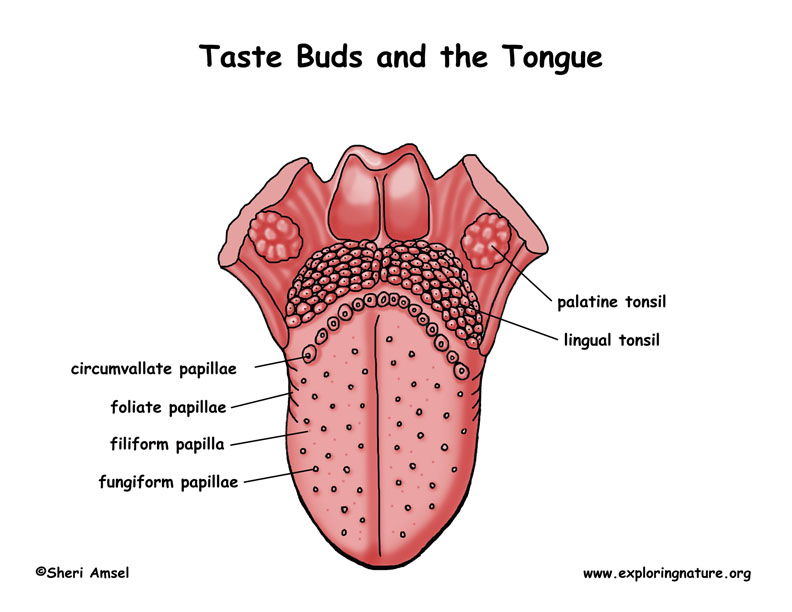

Tongue and taste buds.
There are 10,000 taste buds, most of then on the tongue.The tongue has peg-like papillae that make the tongue feel rough. Taste buds are on the papillae. The taste buds are the sensory receptors for taste.
Each taste bud has tiny hairs that pick up signals from the foods we eat. When food mixes with saliva on your tongue, it bathes the taste buds and the receptor hairs pick up the taste signal and send it to your brain to interpret. The areas of the tongue with the most taste buds are the tip of the tongue and the sides of the tongue though there are some taste buds scattered all over the tongue.
Food is rough and wears out taste bud cells quickly. They are replaced about every 7-10 days. The "taste signal" is sent up a nerve fiber to the brain that tells us if we like what we tasted.
There are really only 4 basic taste types; sweet, sour, salty and bitter. Sweet taste comes from sugars, alcohols and amino acids. Sour taste comes from acids (citric acid of lemons for example). Salty taste comes from metal ions (table salt is sodium chloride). Bitter taste comes from alkaline things like quinine, nicotine and caffeine.
There are several different types of papillae on the tongue.
Fungiform papillae are found all over the top and sides of the tongue. They are mushroom-shaped.
Foliate papillae look like grooves on the sides of the tongue in the back.
Circumvallate papillae are lined up in the back of the tongue. There are up to 14 found there.
Filiform papillae are the most numerous papillae but don't actually play a role in taste.

